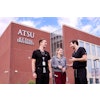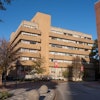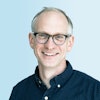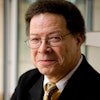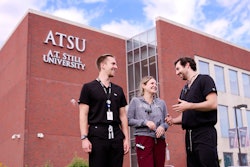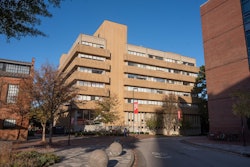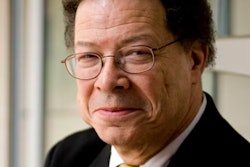Technology enables an historically Black medical college to serve poor Los Angelenos at greatly reduced costs
Sean Morris’s eyes worry him; they hurt sometimes and he wonders
what to do about it. A friend’s report of a six-month wait for exams at
the county hospital had discouraged him from seeking help. But
recently, the twenty-four-year-old discovered the Carmelitos
Teleopthalmology Center only a short walk from his home.
Morris calls to make an appointment and, to his surprise, is
scheduled for the next day. After filling out the necessary paperwork
on the day of his visit, medical assistant Denise Kelly, leads him into
the examination room and introduces him to a young ophthalmology
resident from Drew University, Dr. Michelle Banks. Banks first takes
several pictures of Morris’s eyes from varying angles using a
computerized retinal camera. This digital camera is connected by a
cable to a computer, and Morris is amazed to see his eyeballs floating
instantaneously onto the computer screen. Thanks to this innovation,
testing him for glaucoma won’t require the traditional dilation with
numbing eye drops.
Also viewing the digitized images of Morris’s eyes is Dr.
Yadavinder Dang — an ophthalmologist sitting at his computer five
miles away at the King-Drew Medical Center. Banks and Dang discuss
Morris’s eyes; Morris can see and hear Dr. Dang on the screen, and the
doctor is able to study this patient thoroughly without even being in
the room.
While a high percentage of new patients arrive at Carmelitos with
serious eye problems, Morris gets a clean bill of health. His condition
is diagnosed as “dry eye” — nothing a little vial of artificial tears
can’t remedy.
Big-city public hospitals can be antiseptic, anonymous, and
anything but userfriendly — particularly if you are an uninsured
patient without easy access to preventive treatment. Recognizing that
the Black and Latino population in their county service area of 1.4
million Angelenos is already woefully underserved by existing
facilities, two African American ophthalmologists have almost
single-handedly launched the nation’s first urban telemedicine program.
Using leading-edge technology that includes videoconferencing,
online computers, and advanced software, thirty-four-year-old Dr.
Charles J. Flowers Jr. and forty-five-year-old Dr. Richard S. Baker
co-direct a new telemedicine program at the Carmelitos Housing
Development, the largest housing development in Los Angeles. However,
thanks to the new advances in information technology, they can do their
directing from a distance.
